Chinese Architecture — Characteristics, Types, Functions, Styles, and Facts
Chinese architecture is an independent system with a long history, rich regional diversities, unique characteristics, clear and strict hierarchy rules, and consistent inheritance of traditional culture.
Nowadays, more modern, tall buildings are constructed in China because of the large population in cities and technological development.
However, many ancient, traditional buildings represent Chinese architectural culture.
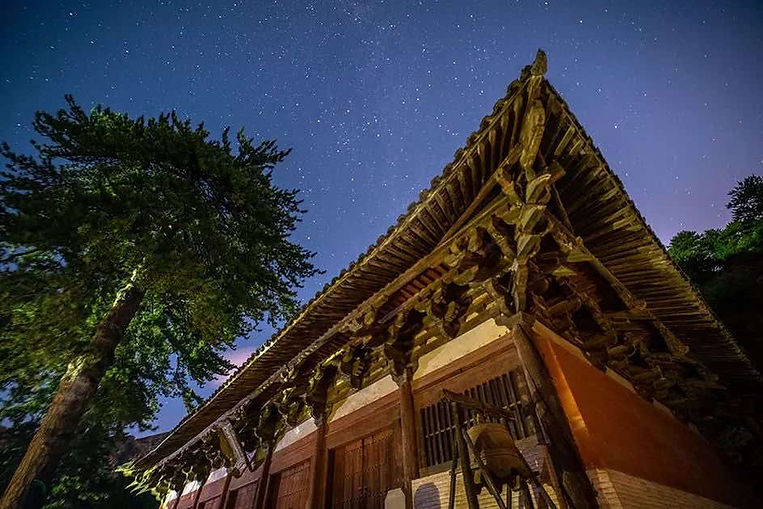
Ancient Architecture Foguang Temple on Mount Wutai, Built in the Year 857.
Characteristics Of Traditional Chinese Architecture
Reasons For the Use of Timber and Stone In Ancient Chinese Architecture
Types Of Ancient Chinese Buildings By Functions
Main Architectural Styles Of Residential Buildings In Different Regions
Structural Classifications Of Traditional Chinese Building
Chinese Roof: Hierarchy And Cultural Elements
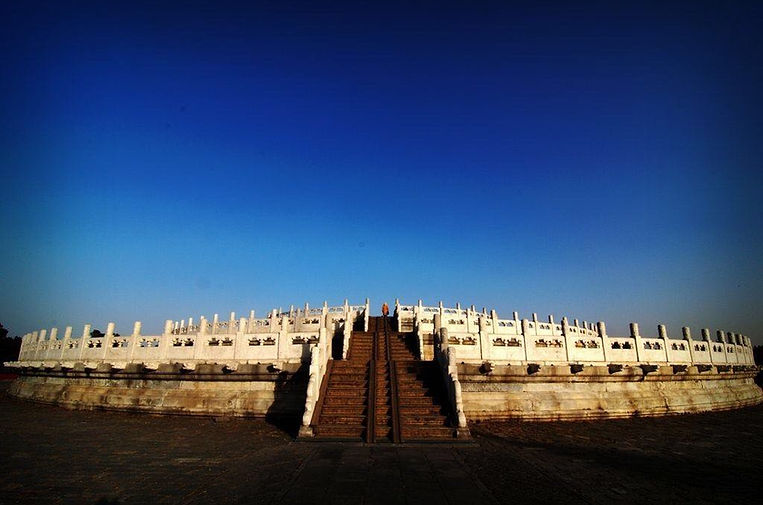
Temple of Heaven Built in 1420 — Place for Emperors to Worship the Heaven
Characteristics of Traditional Chinese Architecture
Strict Hierarchy Rules
Throughout ancient Chinese history, the hierarchy had been strictly followed and highly valued by Confucianism.
In the architectural field, structure, Pattern, Color, decoration, and scale all had explicit regulations according to one’s social status.
For instance, except for unique buildings like religious pagodas, no one’s house could be taller or more prominent than the emperor’s Imperial Palaces.
In some dynasties, civilians were not allowed to use specific auspicious patterns like the Dragon or Phoenix, nor some noble colors like Cinnabar Red and Bright Yellow.

Use of Red and Yellow of Buildings of Imperial Forbidden City, Picture from Lianhualou.
Bilateral Symmetry
According to Yin Yang and Five Elements Theory, balance is an essential and highly valued concept.
Hence, bilateral symmetry, believed to be a great representative of the balance of Yin and Yang, has been strictly used in traditional Chinese buildings, except for Landscape Gardens.
Moreover, in a bilateral symmetrical ancient building complex, the grandest and most important ones are always located in the central line.

Bilateral Symmetrical Forbidden City, Imperial Palace of Ming and Qing Dynasties (1368 — 1912), with Main Halls in Central Line, Photo from the Official Site.
Square Building Complex in Enclosure
In ancient Chinese Astrology, people believed heaven was a hemispherical vault and the earth was a substantial square-shaped land.
Meanwhile, the idea of "Harmony of Man and Nature" is an important belief of ancient Chinese Philosophy, which suggests one's living house should also resemble nature.
Hence, traditional architecture in China is primarily square-shaped building complexes in the enclosure, with north-south orientations and some open spaces inside.

Ancient White Deer Cave Academy or Bailudong Shuyuan on Mount Lu.
Single-story and Small Spaces for Single Function Rooms
Traditional Chinese buildings are usually single-story, each serving only one function, like a bedroom or study.
Even in the emperor’s Imperial Palace, such as the Forbidden City, all houses were not quite big.
According to ancient grand city walls and pagodas, the construction of tall and large buildings has been technologically possible in ancient China.
Therefore, those single-story and small rooms were popular for some important reasons:
-
Have more chances to survive earthquakes and heavy winds;
-
For busy emperors, it’s inconvenient or safe to climb too many stairs;
-
For other people, their houses were not allowed to be taller than the emperor’s or the city wall;
-
There was plenty of land for people to build many single-story buildings;
-
Feng Shui believed that it was ominous for too few numbers of people to stay a long time in a huge house.
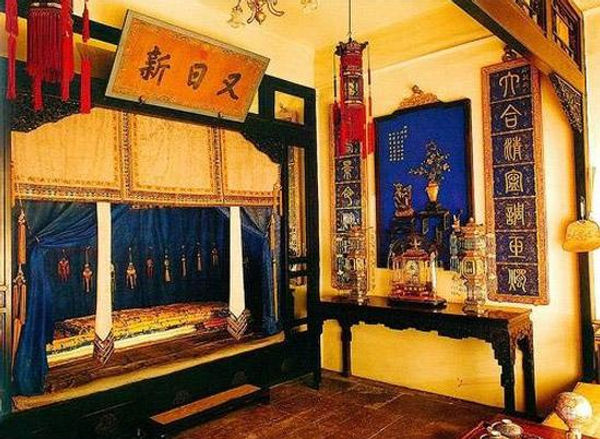
Bedroom of Yongzheng Emperor (1678 — 1735)
Importance of Worship Ceremonies
Worship rites have been one of the most important ceremonies in ancient Chinese culture.
For emperors that were required and qualified to worship heaven and earth and grand deities, unique building complexes were constructed in important positions around their royal palaces, such as the Temple of Heaven.
For civilians that value ancestor worship, ancestral halls usually are the grandest and most sophisticated buildings in the most important position, like in the midline.
Wide Application of Fengshui, Astrology, and Mythological Cultures
Another essential characteristic of ancient architecture in China, both imperial and folk, is the widespread belief and strict application of Feng Shui culture.
Moreover, ancient Chinese Astrology has been a key factor in imperial buildings and city planning.
In contrast, Mythology culture, including Deities, Mythical Creatures, and folk legends, have been widely used as decorative patterns.
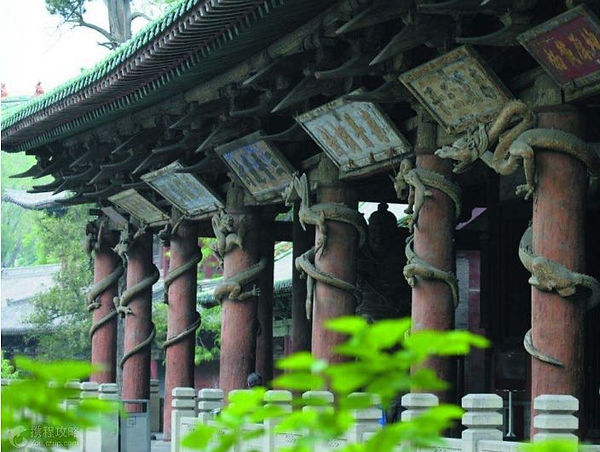
Mythical Creature Panlong Sculptures on Columns of Sheng Mu Dian of Song Dynasty (Built in 1023 — 1032) of Jinci Temple in Taiyuan City.
Explicit Rules for the Use of Timber and Stone
In ancient China, timber was widely used to build traditional architecture, and stones were only for city walls and mausoleums.
Reasons For the Use of Timber and Stone in Ancient Chinese Architecture
Traditional Chinese buildings are mostly made of timber because:
-
Easy to obtain the material, and wood is cheaper;
-
In the Five Elements Theory, timber or wood represents birth and life, thriving, and the east that Azure Dragon guards;
-
Timber building constructed on the earth resembles nature and follows the idea of "Harmony of Man and Nature";
-
Different people have different tastes and requirements for their houses, and wooden buildings could be constructed or rebuilt, or redecorated in a shorter period;
-
Dougong, the interlocking wood bracket construction method that connects columns and beams, made sure the walls don't take too much load bearing, giving people more chances to survive frequent natural disasters like earthquakes.

Dougong Structure of A Hall of Forbidden City, Photo from the Official Site of Palace Museum.
Stone, however, had been a common material in traditional architecture too, but was mainly used in:
-
Building sturdy city walls, such as the Great Wall, to defend people living inside;
-
Constructing important roads for royals or in big cities;
-
Buildings that are required to be firm and long-lasting, such as bridges and religious Pagodas;
-
Building mausoleum.
In ancient China, death was considered another form of eternity; therefore, one's tomb should be firm, solid, and can last eternally.
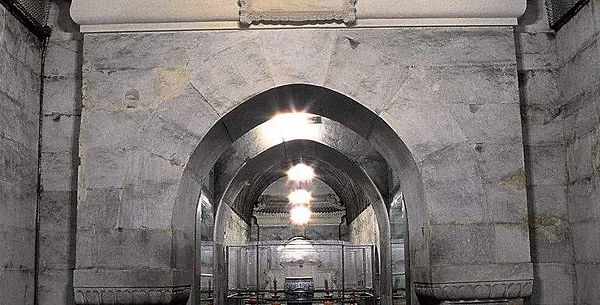
Stone Wall of the Mausoleum of Wanli Emperor Zhu Yijun (1573 — 1620)
Types of Traditional Chinese Building by Functions
Generally speaking, Chinese buildings serve one single function.
Based on their functions, ancient Chinese architecture could be divided into 9 types:
-
Defense systems, such as the Great Wall and city walls.
-
Imperial buildings, such as the Forbidden City and government administrative offices.
-
Mausoleums, such as The Mausoleum of the First Qin Emperor with Terracotta Army.
-
Worship buildings for people to hold sacrificial ceremonies or for the memorial, such as the Temple of Heaven and folk Ancestral Halls.
-
Religious architecture, such as Taoist Temples in Wudang Mountains, Buddhist temples on Mount Wutai, Pagodas, and Mogao Caves.
-
Academy, such as Baiudong Academy constructed by the great philosopher Zhu Xi.
-
Recognition architecture to praise one's achievements or virtues, such as Paifang in Huizhou city.
-
Landscape Chinese Gardens, such as the royal Mount Resort Chengde and the private Lingering Garden.
-
Folk residents have the most diversities based on geological differences.
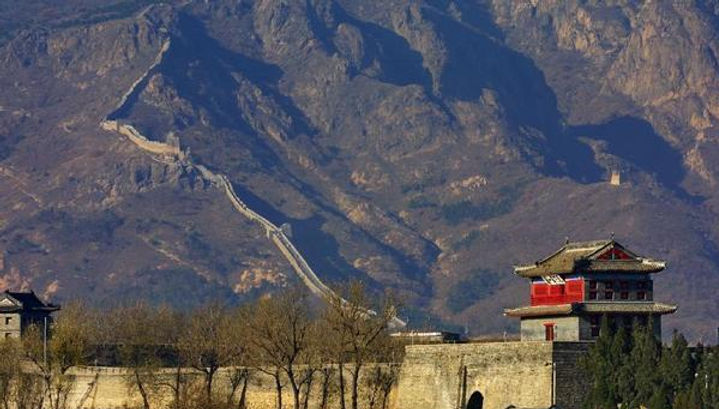
Military Defense Building the Shanhai Pass Built in the Year 1381 on the Great Wall of the Ming Dynasty
Main Architectural Styles of Residential Buildings In Different Regions
Despite strict hierarchical regulations in ancient China, civilian residents varied in different areas because of geological and climatic reasons.

Traditional Northern Style Buildings in Ancient City Pingyao.
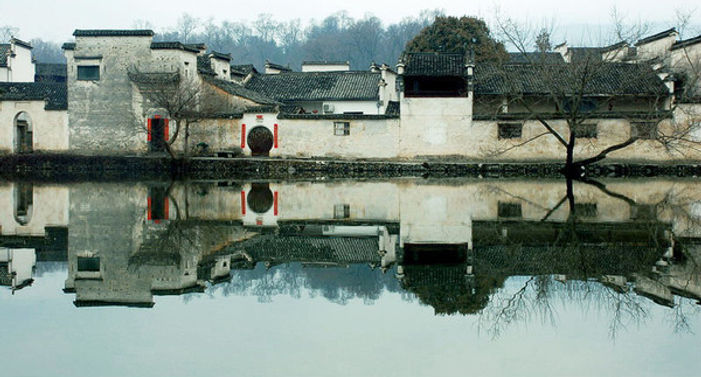
Traditional Hui Style Buildings in Huizhou, the Middle and East of China.
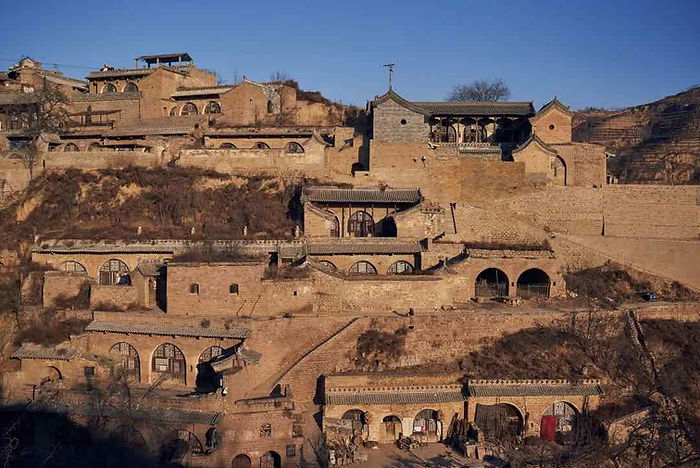
Yaodong or House Cave in Shaanxi and Shanxi Provinces, the Middle and Northwest of China.
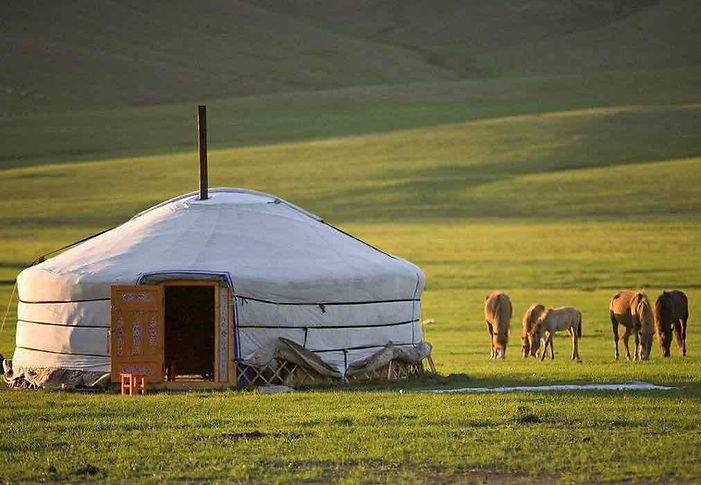
Traditional Yurt in Inner Mongolia, the North of China.

Tulou Building in Fujian Province, Southeast China, Photo by Yuanmu.

Stilted Dwelling in Ancient Town Fenghuang in Hunan Province, Photo by Jianmi.

Huo Er Wu in Lingnan Area, the Guangdong and Guangxi Provinces in Southern China.

Siheyuan, Traditional Architecture in Beijing and Shanxi Province, Middle-Northern China, Photo by Chen Xuan.

Ancient Stone Building Complex of the Taoping Qiang Stockaded Village in Jiuzhaigou, Northwest China.
Structural Classifications of Ancient Chinese Buildings
-
Dian: The main architecture of a building complex, mostly in royal palaces, used for the grandest ceremonial or religious purposes.

Tai He Dian or Hall of Supreme Harmony in the Imperial Forbidden City
-
Tang: Residence of most honorable masters, also could be used for the family to hold celebration activities.
Tang is usually the most important building complex for folk architecture or the second most important one in imperial palaces.

Leshou Tang in Summer Palace, Bedchamber of Empress Dowager Cixi, Photo by Aisheyingde Dayanzi.
-
Ting: To hold meetings or banquets, usually spacious, bright, and well-decorated.

Luxurious Nanmu Hall or Wufeng Xianguan of Lingering Garden, Photo by 97Lang.
-
Lou: Multilayer buildings, usually used as bedrooms or studies.

Jianshan Lou of Humble Administrator’s Garden, Photo by Yin Qimin.
-
Ge: Multilayer buildings with smaller rooms and windows in four directions, usually used as a library, study, or place to enshrine religious deities.

Foxiang Ge of Summer Palace
-
Pavilion or Ting: To rest and appreciate the view, usually small, exquisite buildings with roofs and pillars.

Singing Pavilion or Shuxiao Ting of Lingering Garden, Photo by Baiqiangxiade Huayuan.
-
Xie: A building next to or on the water, usually with railings, the place to appreciate the water view and to rest.

Furong Xie of Humble Administrator’s Garden, Photo from Official Site of Zhuozheng Garden.
-
Gallery or Lang: Long corridor with roofs to connect buildings, with both functional and ornamental value.
They are beautiful structural elements and shelter people from rain, snow, wind, and sunshine.

Long Corridor of Lingering Garden Decorated with Calligraphy Inscriptions, Photo by Ying Zhigang.
-
Tai: Tall stage-like architecture used to observe or appreciate the beautiful views.

Ancient Astronomical Observatory the Guanxing Tai, Built by Guo Shoujing in 1276-1279 on Mount Song.
-
Que: A pair of buildings in front of the imperial palaces, mausoleums, or temples, thrived in the Han Dynasty (202 BC — 220 AD) and had been the representative of imperial authority.
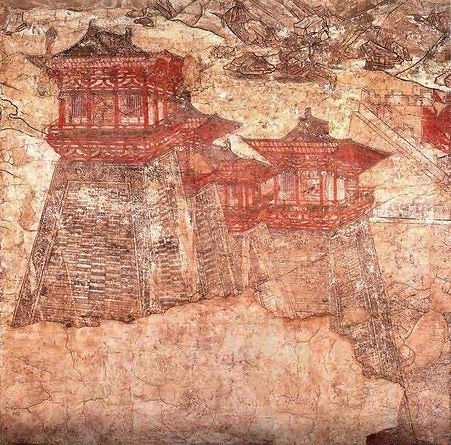
Que Buildings in Fresco on Mausoleum of Prince Yide, Grandson of Empress Wu Zetian (624 — 705).
-
Fang: Also named Paifang, evolved from Que and was popularized since the Tang Dynasty (618 — 907); they were used to memorize exceptional accomplishments or to praise highly valued virtues.

Xu Guo Archway, or Xu Guo Shi fang, Constructed in 1584 Under the Command of Wanli Emperor, to Praise Exceptional Achievements of the Grand Secretariat Xu Guo.
-
Huabiao: A column set by King Yao (about 2377 BC — 2259 BC) to collect suggestions and complaints from civilians.
Later Huabiao evolved into a pair of columns decorated with Mythical Creatures around Imperial Palaces as representative of a reminder for emperors to stay diligent and caring for civilians.
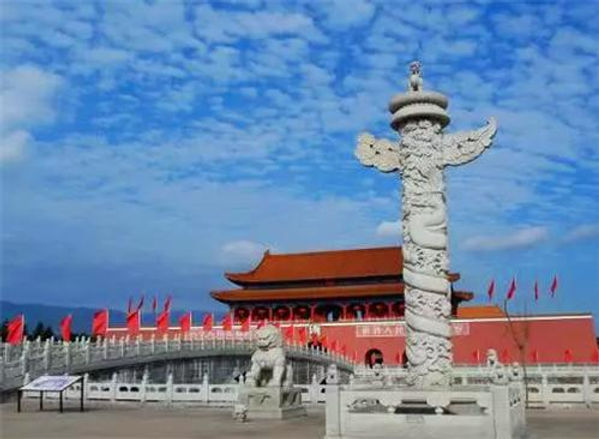
Ancient Huabiao in Front of the Imperial Forbidden City, Constructed from 1406 to 1420.
-
Ta: Ta, also named Pagoda, is used to place Buddhist religious statues or valuable relics, to adjust a place's Fengshui, or to suppress evil spirits and monsters.
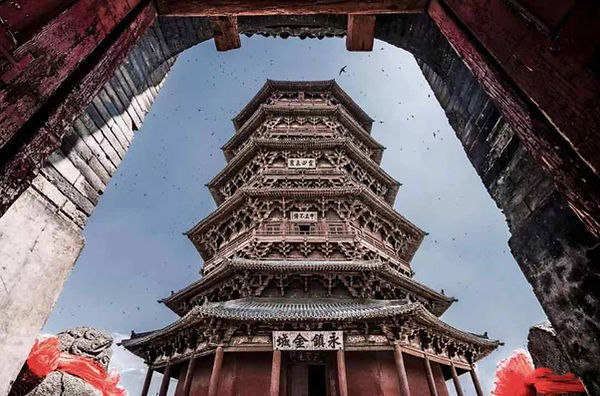
Wooden Pagoda of Yingxian or Pagoda of Fogong Temple, Constructed in 1056 and 67.31 Meters High, the World's Oldest and Tallest Wooden Pagoda, Photo by WOHO.
Chinese Roof: Hierarchy And Cultural Elements
Roofs of traditional architecture are one of the most explicit ways to represent the strict hierarchy.
Ranking from high to low, there are five major styles of roofs of ancient Chinese buildings.

Five Major Roof Styles of Ancient Chinese Buildings, Picture from Deng Zhenyu and Sheji Mulu.
-
Wu Dian Ding or Hipped Roof, with five ridges and four slops.
The most honorable style that exclusively used by royals and prominent temples. The double layer is even more supreme, the highest level in ancient Chinese architecture.

Double-Layer Wu Dian Ding or Hipped Roof of the Hall of Supreme Harmony, also the Largest Hall of the Forbidden City; Photo from the Official Site of Palace Museum.
-
Xie Shan Ding or Hip-and-gable Roof, with nine ridges.
Primarily used in important buildings of palaces, gardens, and temples; double-layer ones are more honorable than single-layer ones.

Xie Shan Ding or Hip-and-gable Roof of Ancient Nanchan Temple on Mount Wutai, Built in the Year 782, Photo by Tiantianquan.
-
Xuan Shan Ding or Overhanging Gable Roof, with one main ridge and four vertical ridges extending out of the gable walls.
The roofs of these houses were built to protect people from rain and have been widely used by civilian residents in rainy southern places.

Xuan Shan Ding or Overhanging Gable Ceramic Tiled Roof of Ancient Shuanglin Temple in Pingyao.
-
Ying Shan Ding or Flush Gable Roof, with one main ridge and four vertical ridges that flush with two gable walls.
This architectural style is more efficient in fireproofing and has been used by civilians in drought northern places.

Ying Shan Ding or Flush Gable Tiled Roof Dwellings in Ancient City Pingyao.
-
Cuan Jian Ding or Pavilion Roof, with a cone roof and a pointed top.
It is widely used in buildings like pavilions and pagodas and has no hierarchy restrictions.

Three Layer Cuan Jian Ding or Pavilion Roof of Hall of Prayer for Good Harvest, on Qigu Altar of the Temple of Heaven, Photo from yktour.
Mythical Creatures on Roofs of Traditional Chinese Buildings
On traditional Chinese buildings' roofs, some mythical creatures guard, whose numbers also follow a strict hierarchy.
The emperor's supreme hall has ten, and his other buildings have nine, while others' should deduct the number based on their hierarchy, like the queen's with seven, officials with five or three, etc.

Ten Mythical Creatures and Leading Deity on Roof of Hall of Supreme Harmony of the Forbidden City, Photo from the Official Site of Palace Museum.
Ten Mythical Creatures on Roofs of Traditional Chinese Architecture:
-
Chinese Dragon or Loong, represents the emperor, paramount imperial authority;
-
Phoenix, the symbol of virtue and peace;
-
Lion, represents power, bravery, and dignity;
-
Heavenly horse, the incarnation of honor and benevolence;
-
Sea horse, the symbol of auspiciousness and loyal;
-
Xiayu, a mythical creature with the power to call for wind and rain;
-
Suanni, a son of the dragon, a creature of blessing and leadership;
-
Xiezhi, the mythical creature of law and justice;
-
Douniu, a type of dragon that could fight and suppress floods.
-
Hang Shi: A creature that looks like a monkey with wings holding a magic weapon that can defeat demons and evil spirits. It is also believed to be the incarnation of the Deity of Thunder, which could protect the building from thunder and storm.
Of all ancient Chinese buildings, only the supreme hall in the imperial Forbidden City, the Tai He Dian or Hall of Supreme Harmony, has Hang Shi on the roof.
In the front is a deity riding on a phoenix, who leads those creatures and guards those palaces.
Decorations of Ancient Chinese Architectural Designs
In ancient China, the strict hierarchy regulations regarding architectural scale, features, use of colors, and patterns didn't limit people's creativity in decoration.
Many types of ornaments have been used to beautify buildings, most of them developed into exquisite arts, such as brick carving, wood carving, fresco, roof and beam painting, caisson, colored glaze, sculptures, eaves tile design, couplets, window and doorway designs, and so on.
Most of them are still popular and widely used in modern architecture in China now.
Click to Read Decorations of Traditional Chinese Buildings on:
You Might Also Like:
The Great Wall of China — The Grand Defensive System
Cultural Symbol Across Time and Space — Yellow River or Huang He River
Longest River of China — Yangtze River or Chang Jiang River
Magnificent Landmarks and Their Epic Stories
Chinese Art — Aesthetic, Characteristic, and Form
Chinese Furniture — Oriental Artwork with Aesthetic and Practical Values
Color Symbolism in Chinese Culture
Chinese Lanterns — History, Utilization, Tradition, Culture, and Artifact
Chinese Paintings — Tradition, Aesthetics, Poetic Beauty, and Artistic Conception
Chinese Calligraphy — Scripts, Aesthetics, and Appreciation of the Supreme Art
Chinese Poetry — Eternal Resonance in Poems To Chant and Appreciate
Chinese Porcelain and Pottery — Art of Earth and Fire
Chinese Novels — Timeline, List, and Brief Introduction
Wuxia and Jianghu — Fairy Tale of the Adult World
Xianxia and Chinese Web Novels
Chinese Zodiac Signs — A Comprehensive Introduction
Chinese Astrology — Three Enclosures, Four Symbols, Twenty-eight Lunar Mansions
Traditional Handicrafts in Chinese Art
Chinese Jade — Origin, History, Meaning, Culture, and Utilization
Chinese Costume and the Strict Hierarchy in the History
Valuable Pieces of Jewelry and Their Historical, Cultural Meanings
Beautiful, Exquisite Traditional Chinese Hair Ornaments
Delicate Pendant Accessories in the History of China
